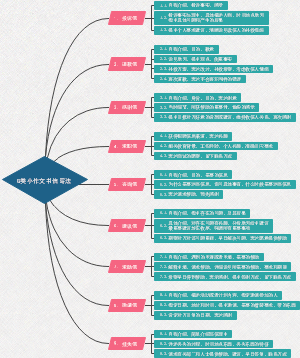导图社区 三、代词
- 75
- 0
- 0
- 举报
三、代词
这是一个关于英语语法-词法-代词的用法的思维导图。梳理了代词的定义、分类及其在句子中的功能与用法。从人称代词、物主代词到反身代词、指示代词。
编辑于2024-08-26 11:47:09- 相似推荐
- 大纲
三、代词
人称代词
形式
单数:主格:I、you、he、she、it 宾格:me、you、him、her、it
复数:主格:we、you、they 宾格:us、you、them
语法功能
主格:作主语,表语 It was he who was late.
宾格:作动宾,介宾,表语 Don't worry about it.
用法
it的用法
做人称代词:除人以外的一切生物或事物,又是也可指婴儿,小孩或者性别不确定的人
用作非人称代词:时间,距离,天气,气候温度及价值
作形式主语或形式宾语: I still find it hard to make good friend with her.
用于强调句中: It is tomorrow that we are going to have a meeting.
he/she的用法
指男士,女士和一切被赋予情感色彩的东西
she指国家,大地,船只,月亮,太阳等
在诗歌,寓言,童话故事当中,she指温柔善良的动物;he指凶猛,粗野的动物。
we/you/they的用法
泛指“我们”,“你们”,“他们”
注意
单独使用宾格: Me too.
as/than(作介词时)+宾格人称:as fast as him/than him as/than(作连词时)+主格人称:as well as he does
并列使用顺序时“and”:①you、he and I(第二人称+第三人称+第一人称)②he and she (男+女)③you or her(第二人称+第三人称)④复数时we、you and they(第一人称+第二人称+第三人称)
特例(第一人称放在前面)
承认错误,承担责任,长辈对晚辈(长辈是第一人称),长官对下属,当其他人称代词被定语从句修饰时 ① I and he ②I and my daughter ③We and the students who……
物主代词
形式
名词性:mine/yours/his/hers/its/ours/yours/theirs
形容词性:my/your/his/her/its/oue/your/their
语法功能
名词性:名词作用,作主宾表——The car is mine. 其后面不可再加名词
形容词性:修饰名词作定语——my car ,my bags. p.s.其前面不能用"this","that","some","a","an","the"直接修饰,this my book.(×)
反身代词
形式
单数:myself, yourself, himself, herself, itself
复数:ourselves, yourselves, themselves
语法功能
①作宾语:He fell down and hurt himself. ②作表语:I'll be meself again in no time.(我很快就会好起来)③ 作同位语:president himself/we ourselves. We ourselves can solve this problems.=We can solve this problems ourselves.
常用的反身代词短语
by oneself 独自地 devote oneself to 致力于 for oneself 为自己,代表自己 lose oneself 迷路 speak to oneself 自言自语 enjoy oneself 玩得愉快 help oneself to 随便吃,随便用 of oneself 自动地,自发的 teach oneself 自学
指示代词
形式
时空上离人近:this、these;时空上离人远:that、those
语法功能
主语,宾语,表语,定语
注意
such(这样的)、same(同样的)、送(这样)也可以充当指示代词——I think so.
用法
①时空上的远近②that、those代替前文提到的名词③已完成,已提到,用that(this),将发生的用this④电话中this(自己),that(对方)⑤such(这样的),可单使作主宾表定⑥same(同样的),与“the”连用⑦“so”代替句子或短语所代表的意思,常用于省略句
不定代词
形式
many/ mach/ both/ all/ each/ either/ neither/ none/ other/ others/ another/little/ few/ one/ some(someone/somebody/something)/ any(anyone/onebody/anything)/ every(everyone/everybody/everything)/ no(no one/nobody/nothing)
语法功能
作主语,作表语,作宾语,作定语
用法
①one:one/ ones/ one's/ oneself : one单独使用泛指人,一个人,人们。one/ones表具体的人或事/代替出现过的——it(用一类事物)one(同类不同物)that/those(特指)
②some/any
some:肯定句,表示某个,后接可数名词单数;表请求,邀请,或征求意见地疑问句
any:否定句,疑问句,条件状语从句,当any用于肯定句中,表三者或三者以上中的任何一个,加可数名词单数
③much+不可数名词(much too = too 实在太)(too much = much 太多)many+可数名词 = more
④few/little
few(否定句,后加可数名词)/ a few(肯定句)—— fewer/fewest(修饰形容词、副词、动词、比较级) not a few、quite a few、a good few = many、o nly a few、just a few = few
little(肯定句,后加不可数名词)/ a little (肯定句)——less/least not a little、quite a little = much、only a little、just a little = little
⑤each (of),each+可数名词单数,each of+可数名词复数,each not (全部否定)用于主语,宾语,表语,定语,同位语(两者及以上) every+可数名词单数,作定语,三者及三者以上 every not(部分否定)
⑥both……(and)(两个人或物)all(of)
all:指事物整体或抽象概念用单数,指人时用复数
both,all:作主语同位语时位于实义动词之前
both,all+ not (部分否定);neither,none(全部否定)
⑦either(两者中任何一个)neither(两者中任何一个都不)——either/ neither + of ; either…or(或者……或者);neither…nor(既不……也不);either(也,放句首);neither(也不)放句首常用倒装
⑧none(三者或三者以上都没有),谓语动词用单数或者复数,回答how many / how much。 no one / no body,谓语动词用单数,回答who。 nothing,谓语动词用单数,回答what。
⑨another(三者以上任何一个),the other (两者中另一个),the others,other(+可数名词复数),others
⑩复合不定代词的用法:固定搭配
something like 大约,类似 nothing but 仅仅,只不过 something of有几分,有点儿 anything but决不 or something诸如此类地什么
相互代词
形式:
each other / each other's 两者 one another / one another's 三者及三者以上
语法功能
主格:作动宾和介宾;所有格:定语
疑问代词
形式
who/whom(人) what/what(物) which/which(人/物) whose(所有格)
语法功能
主语,表语,宾语,定语
疑问代词
who(主格)、whom(宾格)、whose(所有格)、what、which









